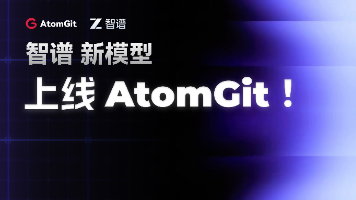七种Vue3传值方式
七种Vue3传值方式
props
emit
v-model
refs
provide/inject
eventBus
vuex/pinia(状态管理工具)
Props方式
Props方式是Vue中最常见的一种父传子的一种方式
父组件代码如下:
<template>
<child-components :list="list"></child-components>
<div>
<input v-model="value" type="text" placeholder="请输入"/>
<button @click="handleAdd" type="button">添加</button>
</div>
</template>
<script setup>
import { ref } from 'vue'
import ChildComponents from './child.vue'
const list = ref(['JavaScript', 'HTML', 'CSS'])
const a= ref('1')
// add 触发后的事件处理函数
const handleAdd = () => list.value.push(a.value)
</script>
子组件只需要对父组件传递的值进行渲染即可,代码如下:
<template>
<ul >
<li v-for="i in props.list" :key="i">{{ i }}</li>
</ul>
</template>
<script setup>
import { defineProps } from 'vue'
const props = defineProps({
list: {
type: Array,
default: () => [],
},
})
</script>
emit方式
emit方式也是Vue中最常见的组件通信方式,该方式用于子传父;
子组件代码如下:
<template>
<div >
<input v-model="value" type="text" placeholder="请输入"/>
<button @click="handleSubmit" type="button">添加</button>
</div>
</template>
<script setup>
import { ref, defineEmits } from 'vue'
const a= ref('1')
const emits = defineEmits(['add'])
const handleSubmit = () => {
emits('add', a.value)
a.value = ''
}
</script>
在子组件中点击【添加】按钮后,emit一个自定义事件,并将添加的值作为参数传递。
父组件代码如下:
<template>
<ul>
<li v-for="i in list" :key="i">{{ i }}</li>
</ul>
<child-components @add="handleAdd"></child-components>
</template>
<script setup>
import { ref } from 'vue'
import ChildComponents from './child.vue'
const list = ref(['JavaScript', 'HTML', 'CSS'])
// add 触发后的事件处理函数
const handleAdd = value => {
list.value.push(value)
}
</script>
在父组件中只需要监听子组件自定义的事件,然后执行对应的添加操作。
v-model
v-model是Vue中一个比较出色的语法糖,就比如下面这段代码
<ChildComponent v-model:title="pageTitle" />
// 就是下面这段代码的简写形势
<ChildComponent :title="pageTitle" @update:title="pageTitle = $event" />
子组件
<template>
<div>
<input v-model="value" placeholder="请输入"/>
<button @click="handleAdd" type="button">添加</button>
</div>
</template>
<script setup>
import { ref, defineEmits, defineProps } from 'vue'
const value = ref('')
const props = defineProps({
list: {
type: Array,
default: () => [],
},
})
const emits = defineEmits(['update:list'])
// 添加操作
const handleAdd = () => {
const arr = props.list
arr.push(value.value)
emits('update:list', arr)
value.value = ''
}
</script>
在子组件中我们首先定义props和emits,然后添加完成之后emit指定事件。
注:update:*是Vue中的固定写法,*表示props中的某个属性名。
父组件中使用就比较简单,代码如下:
<template>
<!-- 父组件 -->
<ul >
<li v-for="i in list" :key="i">{{ i }}</li>
</ul>
<!-- 子组件 -->
<child-components v-model:list="list"></child-components>
</template>
<script setup>
import { ref } from 'vue'
import ChildComponents from './child.vue'
const list = ref(['JavaScript', 'HTML', 'CSS'])
</script>
refs
在使用选项式API时,我们可以通过this.$refs.name的方式获取指定元素或者组件,但是组合式API中就无法使用哪种方式获取。如果我们想要通过ref的方式获取组件或者元素,需要定义一个同名的Ref对象,在组件挂载后就可以访问了。
<template>
<ul>
<li v-for="i in childRefs?.list" :key="i">
{{ i }}
</li>
</ul>
<!-- 子组件 ref的值与<script>中的保持一致 -->
<child-components ref="childRefs"></child-components>
<!-- 父组件 -->
</template>
<script setup>
import { ref } from 'vue'
import ChildComponents from './child.vue'
const childRefs = ref(null)
</script>
子组件
<template>
<div>
<input v-model="value" placeholder="请输入"/>
<button @click="handleAdd" type="button">添加</button>
</div>
</template>
<script setup>
import { ref, defineExpose } from 'vue'
const list = ref(['JavaScript', 'HTML', 'CSS'])
const a= ref('1')
// add 触发后的事件处理函数
const handleAdd = () => {
list.value.push(a.value)
a.value = ''
}
defineExpose({ list })
</script>
setup组件默认是关闭的,也即通过模板ref获取到的组件的公开实例,不会暴露任何在**
provide/inject
provide和inject是Vue中提供的一对API,该API可以实现父组件向子组件传递数据,无论层级有多深,都可以通过这对API实现。示例代码如下所示:
父组件
<template>
<!-- 子组件 -->
<child-components></child-components>
<!-- 父组件 -->
<div>
<input v-model="value" placeholder="请输入"/>
<button @click="handleAdd" type="button">添加</button>
</div>
</template>
<script setup>
import { ref, provide } from 'vue'
import ChildComponents from './child.vue'
const list = ref(['JavaScript', 'HTML', 'CSS'])
const a= ref('')
// 向子组件提供数据
provide('list', list.value)
// add 触发后的事件处理函数
const handleAdd = () => {
list.value.push(a.value)
a.value = ''
}
</script>
子组件
<template>
<ul >
<li v-for="i in list" :key="i">{{ i }}</li>
</ul>
</template>
<script setup>
import { inject } from 'vue'
// 接受父组件提供的数据
const list = inject('list')
</script>
使用provide进行数据传递时,尽量readonly进行数据包装,避免子组件修改父级传递过去的数据。
事件总线
Vue3中移除了事件总线,但是可以借助于第三方工具来完成,Vue官方推荐mitt[2]或tiny-emitter[3]
状态管理工具
Vuex[4]和Pinia[5]可以轻松实现组件通信,由于这两个工具功能比较强大,具体可以查阅文档

AtomGit 是由开放原子开源基金会联合 CSDN 等生态伙伴共同推出的新一代开源与人工智能协作平台。平台坚持“开放、中立、公益”的理念,把代码托管、模型共享、数据集托管、智能体开发体验和算力服务整合在一起,为开发者提供从开发、训练到部署的一站式体验。
更多推荐
 已为社区贡献1条内容
已为社区贡献1条内容








所有评论(0)